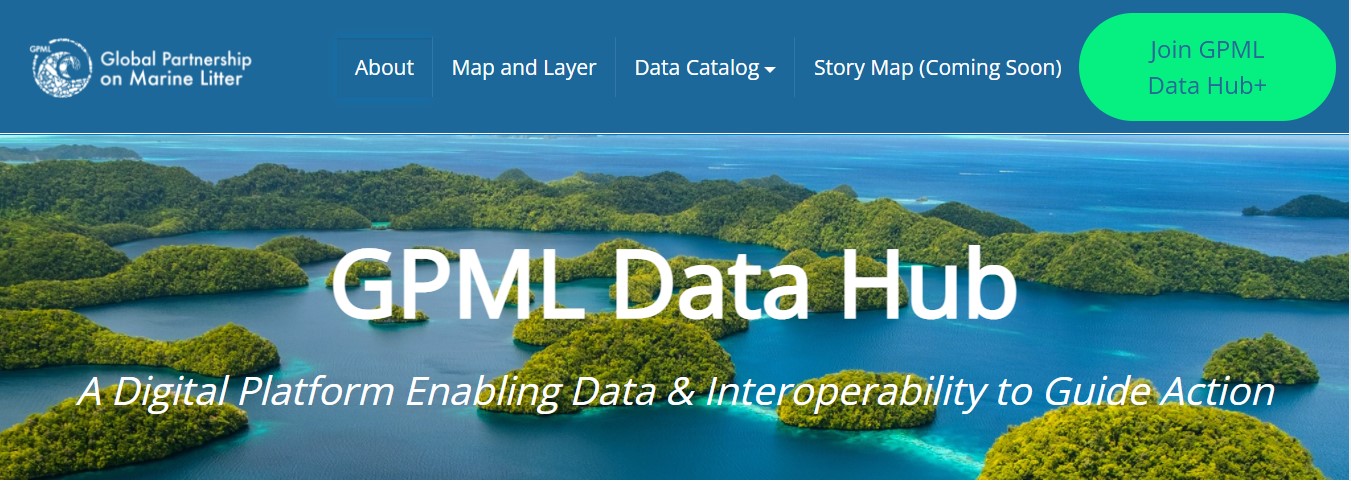Description of the user organisation
Set up in 2020, the United Nations Global Partnership on Marine Litter (GPML) is a multi-stakeholder coalition of worldwide actors who play a key role in addressing marine litter pollution, mainly due to plastics. A Steering Committee leads the partnership and the United Nations Environment Programme provides secretariat services. The GPML was launched at the UN Conference on Sustainable Development (Rio+20) in June 2012 to promote the implementation of the Global Programme of Action for the Protection of the Marine Environment from Land-based Activities. Five regional nodes guide actions that are tailored to face regional environmental challenges. The nodes cover the Mediterranean, South Asian, Caribbean, and Pacific areas.
Challenges faced
Plastic pollution is a pressing global issue that endangers marine ecosystems, human well-being and animal welfare. Only 9 percent of plastic is recycled; by 2025, we could be dealing with up to 250 tonnes of mismanaged waste; every year the world uses up to 5 trillion plastic bags; about 10 million tonnes of plastic enters our oceans each year (Source: GPML website). Managing the problem requires cooperation and coordination among governments, intergovernmental organisations, regional bodies, private sector, civil society and academia. For this purpose, the GPML Digital Platform integrates and gives access to up-to-date and validated data and information to guide efforts towards the achievement of the Un 2030 Agenda for Sustainable Development, in particular the Target 14.1: “By 2025, prevent and significantly reduce marine pollution of all kinds, particularly from land-based activities, including marine debris and nutrient pollution.” Through the data hub, GPML members share their expertise to assess current risks and predict trends. They must also take action to reduce levels and impacts of any source of marine debris introduced or accumulated into the aquatic environment. The GPML platform is developing rapidly thanks to the contribution of the growing number of partners.
EMODnet services used
Most EMODnet Chemistry data products for marine litter, eutrophication, and contaminants are forthcoming on the GPML data hub as specified hereafter. The GPML Data Catalogue and the Geographic Information System allow users to get details and visualise the maps showing distribution, abundance and composition of EU marine litter on beaches and in seabed sediment. Regarding eutrophication, the following data products are readily available on the GPML Digital Platform: the monthly climatologies for all European seas, the seasonal climatologies built by combining data per sea region as 6-years running averages, and the higher resolution seasonal climatologies built by combining data of specific coastal areas. The maps display the depth-time variability of dissolved inorganic nitrogen, phosphate, silicate, chlorophyll-a, and dissolved oxygen concentration. Lastly, the GPML portal is an additional UN gateway to the EMODnet Chemistry maps for ten contaminants selected from antifoulants, hydrocarbons, heavy metals, polychlorinated biphenyls, pesticides and biocides. The maps display the spatial distribution of sampling stations and contribute to the evaluation of data quality and adequacy for environmental status assessment according to the Marine Strategy Framework Directive and the Environmental Quality Standards Directive. In conclusion, this use case confirms EMODnet Chemistry's commitment to networking, which is a powerful instrument to efficiently spread meaningful and sustained information through analysis and decision support tools based on standards and innovative technologies and approaches.
Impact of EMODnet
EMODnet Chemistry began discussing possible synergies with the Global Partnership on Marine Litter during the virtual IOC-UNESCO Ocean Best Practices Workshop held on 20-24 September 2021. Since then, besides sharing the EMODnet Chemistry treasure box of data and data products for integration into the GPML digital platform, the two partnerships have also started working together to review and align glossaries, ontologies and vocabularies for the use of common terms or compatibility. In addition, further interactions with UNEP/MAP for a global approach to marine pollution are being explored to network as many multidisciplinary scientific resources as possible. Data discovery and access experience will greatly benefit from these collaborations, especially if the interconnected data gateways speak the same language.
Media

